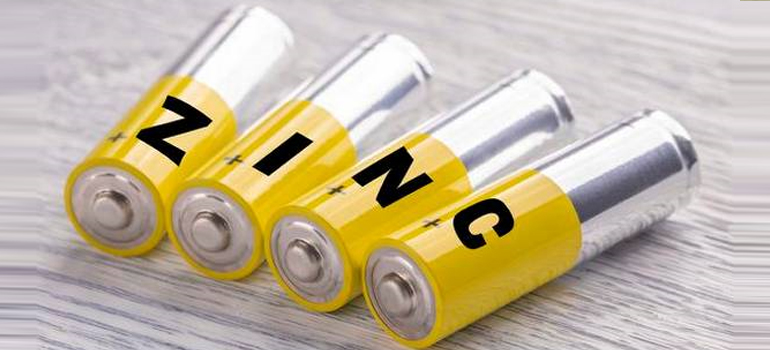
From different cell architecture to developing a bifunctional catalyst, research into metal-air batteries is gathering pace
The need for India to grow out of lithium for energy storage is well recognised. Lithium is scarce, less safe, and lithium-ion has energy limitations. As such, India needs to leapfrog lithium into something way better – like metal-air batteries, which have been in focus for some years now, because they pack more power.
But they have their problems.
Metal-air batteries, which have a metal anode (electron giver) and atmospheric oxygen as the cathode (electron acceptor), have been attractive because you can use cheaper and easily available metals such as sodium, zinc, iron, aluminium, magnesium and calcium. Of these, zinc and aluminium are ahead in the race, followed by sodium and iron.
Metal-air batteries come with a number of technological challenges, but the message to industry from research labs is that these issues are being tamed. It appears to be a matter of less than five years before metal-air batteries become commonplace, certainly in stationary energy storage, and most probably in vehicles too. For range, calculated in kWhr/kg, metal-air batteries are first class – they beat lithium-ion (Li-ion) blue (though lithium-air is even better). Zinc-air boasts a practical energy density of 350-500 Whr/kg (theoretical energy density is way higher), compared with 100-265 Whr/kg of Li-ion.
Since the voltage of metal-air batteries is typically less than that of Li-ion, you might need more cells, but the cells weigh much less because they have air for cathode.
There are other headaches, though. The biggest is over re-chargeability.
The reasons are technical – the ‘parasitic hydrogen evolution’ at the anode corrodes it and affects the performance of the electrolyte; there is also the formation of spikes (dendrites) on the metal anode. However, an easy and practical interim solution is in sight: periodic replacement of the discharged electrolyte and anode with fully charged ones.
Professor Satya Seshadri of the fluid mechanics department of IIT-Madras, who is working on a zinc-air battery, says this is akin to replacing the membrane in the water purifier at home – you do it once in six months or so. As for the electrolyte, go to a petrol station once in a while and get the liquid replaced in minutes. Seshadri observes that this can give rise to a whole new industry – that of recycling the anodes and refining the electrolyte, perhaps with solar energy.
Tackling issues
Other researchers are working on other ways to tackle these issues. Professor Satya Chakravarthy of the Department of Aerospace Engineering at IIT-Madras, who has developed an aluminium-air battery, uses a “separate channel” for the hydrogen. He says his team has “realised the energy density potential in our lab” and that the aluminium-air battery has worked over 1,000 hours of duty cycles and “thousands of charge-discharge cycles”.
K Ramya and R Balaji, researchers at the International Advanced Research Centre in Powder Metallurgy and New Materials (ARCI), Chennai, are trying out a different cell architecture – two separate chambers for air cathodes, one for discharging and the other for recharging – as advocated in a few scientific papers.
Aravind Chandiran of the Centre for Photo and Electro-chemical (C-PEC) at IIT-Madras is developing a bifunctional catalyst (see ‘How distorting materials can help green the economy’ below), a halide perovskite, for both discharge and recharge.
“The plan is to develop mechanically rechargeable metal-air battery packs and demonstrate them on two-wheelers and three-wheelers on the campus,” Chandiran says.
Among the other issues with metal-air is the reaction of atmospheric carbon dioxide with the electrolyte to form carbonates and the erosion of the catalyst coated on the electrodes, but none of these is considered insurmountable.
As such, metal-air batteries are today feasible enough for industry to start jumping into it.
In March, Indian Oil Corporation tied up with Israeli company Phinergy to produce aluminium-air batteries. The UK-based MAL Research and Development Ltd (originally Metalelectrique SAS of France) shouts the loudest among metal-air companies – it claims (among other things) to be ready with a battery that costs just $83 a kWhr. Vancouver, Canada-based Zinc8 Energy Solutions speaks of a $45-a-kWhr zinc-air battery for stationary applications.
With so much happening in metal-air batteries, should the industry be putting down money on lithium-ion?
Raghavan Gopalan, who heads the Chennai branch of ARCI and oversees research, feels that metal-air batteries will mature from “TRL-3 to TRL-6” (technology readiness levels) in “less than five years”. They will take market share, but won’t completely elbow out Li-ion.
Chakravarthy believes that “too much money is getting tied-up too soon in Li-ion”, which could hamper the growth of metal-air. “People caught napping on investing in Li-ion might still have the last laugh,” he says.
Original News Link
https://www.iitm.ac.in/happenings/press-releases-and-coverages/looking-beyond-lithium